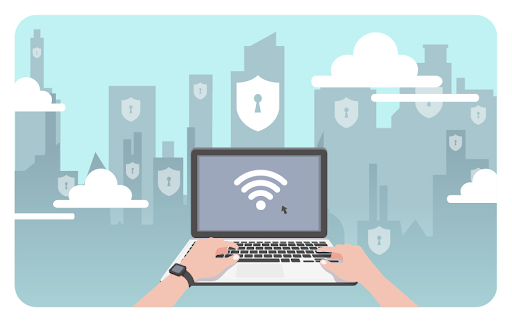
The shift towards remote work has become more than a trend; it’s now a staple in modern business practices. However, this shift brings unique security challenges that demand constant attention. Remote work environments are often less controlled, which makes them more susceptible to cybersecurity threats. This blog explores the importance of regular Vulnerability Assessment and Penetration Testing (VAPT) in ensuring the security of remote work setups.
Challenges of Remote Work Security
Use of Personal Devices: Many remote workers use personal devices to access company data. These devices may not meet the same security standards as business-controlled ones.
- Brute Force Attacks: Remote systems, especially those accessible through public or less secure networks, attract brute force attacks. Attackers use these methods to crack passwords and gain unauthorised access.
- Network Security: Home networks usually have weaker security protocols than office networks. This difference increases the risk of cyber intrusions.
- Phishing Attacks: Remote workers are more likely to face phishing attempts. Attackers exploit isolated employees who cannot quickly verify the legitimacy of messages.
VAPT’s Role in Securing Remote Work
Regular Vulnerability Assessment and Penetration Testing (VAPT) play a key role in identifying and reducing the risks of remote work. VAPT helps organisations in several ways:
- Identify Vulnerabilities: It detects weaknesses in remote work infrastructures, such as insecure Wi-Fi setups, vulnerable endpoints, and unsafe usage practices.
- Simulate Real-World Attacks: VAPT tests how remote systems respond to actual cyber threats. This process gives a clear picture of how effective current security measures are.
- Develop Robust Security Protocols: Using VAPT results, businesses can create stronger security protocols designed specifically for remote work environments.
Best Practices for Remote Work Security
To strengthen the security of remote work environments, follow these practical tips:
- Multi-Factor Authentication (MFA): Always enable MFA to add an extra layer of protection. It makes it harder for attackers to gain access, even if they know a password.
- Regular Security Training: Conduct ongoing security awareness sessions for employees. Focus these on the specific risks that come with remote work.
- Use Secure VPN Connections: Encourage employees to use Virtual Private Networks (VPNs) to secure all data transmissions.
- Regular Updates and Patch Management: Keep all devices used for remote work updated and patched. This practice helps close security gaps and guards against known vulnerabilities.
- Endpoint Protection: Use strong endpoint security tools to protect any device that connects to corporate networks and data from remote locations.
Conclusion
Remote work has become a key part of modern business operations. To keep it secure, regular VAPT remains essential. By assessing and testing the security of remote work setups, businesses can detect vulnerabilities early and reduce risks quickly. This approach helps maintain the trust and confidence of both employees and clients.
Sentry Cyber provides comprehensive VAPT services that address the unique challenges of remote work. Our team helps you keep operations secure and resilient against cyber threats.
Take action today to strengthen your remote work security with Sentry Cyber’s tailored VAPT solutions. Contact us to learn how our experts can help you maintain a safe and efficient remote working environment.
